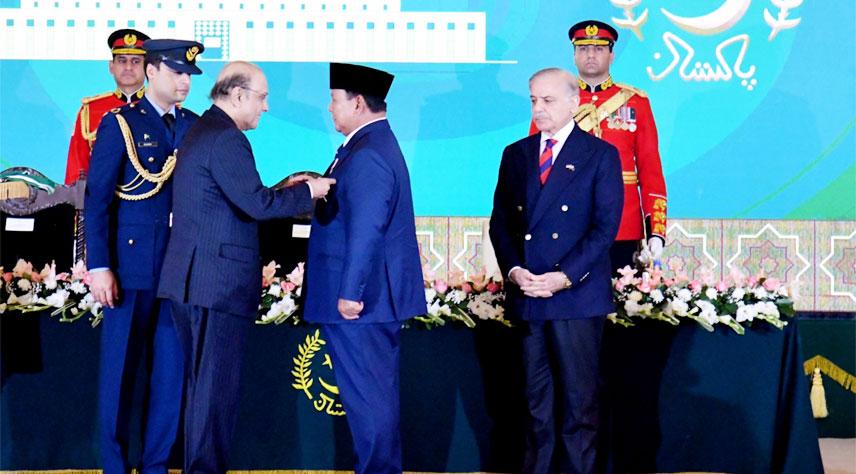Counter-arguments on accountability and procedural breaches


Lahore: The provisians of the National Accountability Ordinance (NAO) 1999 has declared that corruption and misconduct are offenbces.
This counter-narrative and legal strategy focus on exposing procedural lapses, financial irregularities, and breaches of fiduciary duties under Pakistani law.
1. Violation of National Accountability Ordinance (NAO), 1999:
•NAO criminalizes corruption and corrupt practices. The acceptance of land, funds, or any monetary benefit under the guise of a “trust” (Al-Qadir University Trust) without transparent documentation and compliance with rules constitutes misuse of authority and corrupt practices.
•The accused’s claim of “not receiving any personal benefit” is contradicted by the transfer of valuable land and substantial funds, which were not independently verified by government audits or relevant financial scrutiny bodies like the Auditor General of Pakistan.
2. Rules of Business, 1973:
•The accused contends that placing an “additional agenda” item during the cabinet meeting was routine and compliant with the Rules of Business. However, Rules of Business stipulates prior circulation of agenda items to cabinet members. Dispensation of this rule requires exceptional justification, which is absent in the accused’s explanation.
•The confidentiality and lack of deliberation on such a high-stakes financial matter, involving £190 million, raise serious concerns of procedural manipulation.
3. Conflict of Interest and Misuse of Public Office:
•As per Constitution of Pakistan, public office holders are bound by principles of honesty and trust. The accused’s approval of transactions tied to his personal associates (e.g., Malik Riaz) and the absence of transparency in fund repatriation from the UK signify a potential breach of these principles.
4. Qanun-e-Shahadat Order, 1984:
•The accused challenges the admissibility of key evidence, including documents like the deed of confidentiality, arguing forgery. However, under Qanun-e-Shahadat Order, documentary evidence must be verified by independent experts. The accused’s failure to present counter-forensic analysis weakens his claim.
5. Role of Cabinet Members and Accountability:
•The accused deflects responsibility to cabinet members, claiming unanimous approval of the additional agenda. However, under the Collective Responsibility Clause of the Constitution, the Prime Minister bears ultimate accountability for cabinet decisions.
6. Al-Qadir Trust as a “Sham Entity”:
•The trust’s establishment and operation fail to demonstrate sufficient public interest or transparency. Despite claims of providing scholarships, the financial records presented do not conclusively show compliance with trust regulations under Trusts Act, 1882.
Specific Counterpoints to Key Claims
•Claim: The £190 million was a private settlement unrelated to the State of Pakistan.
•Counter-Argument: The funds originated from assets frozen due to suspected corruption in the UK. Their repatriation required state facilitation and accountability. Lack of consultation with the Finance Division or Ministry of Law violates procedural requirements under the NAO and Rules of Business.
•Claim: No personal benefit was derived from the land or funds.
•Counter-Argument: As settlor of the trust, the accused retained significant control. The transfer of substantial assets without competitive bidding or independent audit oversight constitutes indirect personal benefit, violating NAO.
•Claim: The prosecution withheld critical evidence, including documents from the NCA.
•Counter-Argument: The accused’s legal team could have sought these documents through judicial means, such as mutual legal assistance. Failure to do so indicates a lack of proactive defense rather than prosecutorial bias.
•Claim: Procedural lapses in the prosecution’s case, including unverified documents.
•Counter-Argument: Even if certain documents lack procedural validation, the totality of evidence—such as land mutations, bank transactions, and witness testimony—demonstrates a consistent pattern of financial irregularities linked to the accused.
Recommendations for Prosecution
1. Forensic Analysis and Expert Witnesses:
•Conduct forensic verification of disputed documents and involve international financial crime experts to validate the flow of funds and property transfers.
2. Focus on Breach of Fiduciary Duty:
•Highlight how the accused’s actions as a public officeholder breached fiduciary obligations to act in the best interest of the State.
3. Transparency and Accountability Violations:
•Use the lack of independent audits, missing consultations with key ministries, and confidentiality clauses to build a narrative of deliberate obfuscation.
Jays president Shapiro given new 5-year deal
- 20 hours ago
Australian PM declares Sydney shooting a ‘terrorist’ attack targeting Jews
- 13 hours ago
Pakistan aims to become model in digital assets regulation: Bilal saqib
- 14 hours ago

How do you know if you’re wasting your life?
- 6 hours ago
Sources: Rangers address needs with 3 signings
- 20 hours ago

Pakistan condemns attack on UNISFA in Kadugli, Sudan
- 14 hours ago
Diaz picked Dodgers because 'I'm looking to win'
- 20 hours ago
Source: Gray, Nats reach deal to avoid arbitration
- 20 hours ago
NHL board of governors eager to see more 'color vs. color' jersey matchups
- 20 hours ago
Security forces kill 13 Khwarij in two separate engagements in KP: ISPR
- 15 hours ago
Under-19 Asia Cup: India beat Pakistan by 90 runs
- 14 hours ago
Bondi Beach shooting: Australia hails ‘hero’ Ahmed who stopped gunman
- 14 hours ago








